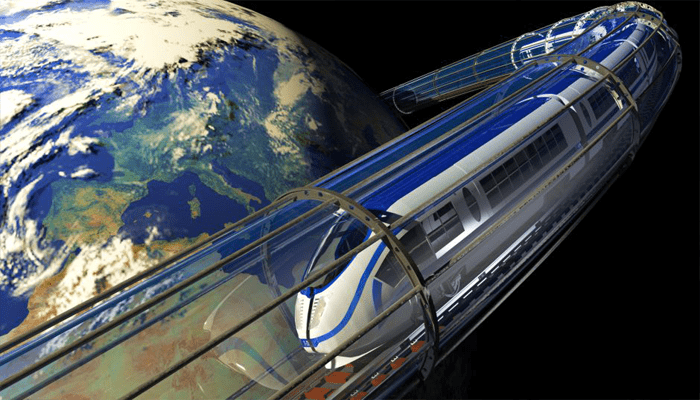There has been a lot of talk recently about reusable rockets and asteroid mining making space travel cheaper, but a proposed idea for a maglev train into space might be the real answer.
Using existing maglev technology, the Startram project proposes to launch people and cargo down a 1,000-mile long tunnel 12 miles high at 20,000 mph using a superconducting cable.
The idea sounds far-fetched, but it’s being pitched by some really smart people. Dr. James Powell co-invented superconducting maglev trains and Dr. George Maise is an aerospace engineer; they believe the train into space is the answer that could make interplanetary travel possible.
Launching humans and cargo into space is very expensive. Every pound boosted into orbit costs thousands of dollars and that cost factor is stopping humanity from colonizing Mars, mining asteroids, and establishing a lunar colony, according to the Startram website.
The science behind the space train is rather complicated, but the idea is pretty simple. Maglev trains hover above their tracks and don’t have to worry about friction so they’re theoretically capable of reaching 20,000 mph. Put one in a 1,000-mile long vacuum tube and it’s possible to protect the humans and cargo aboard from being ripped to shreds.
Most of the track would run along level ground, but the exit point would need to be 12 miles high in order to reach space so engineers could use a superconducting cable to levitate that end of the track.
It starts to sound complicated, but the designers argue the technology needed for such an endeavor pale in comparison with the science needed for a space elevator.
The space train could be built in polar regions like Alaska, Greenland or Siberia in a mere 20 years for the cost of some $60 billion, that’s one-third the cost of putting the space shuttle into orbit. A cargo-only version would only cost $10 billion and require 10 years for construction. Once it’s fully constructed, putting a pound of cargo into orbit would drop from about $4,500 to about $100, which would make space travel and orbital tourism a much more realistic dream.
The ability to move large amounts of material into space quickly and cheaply could also help Earth construct a planetary defense system to defend the world against killer asteroids, Startram designers told Gizmodo.
“To really defend against impacts, we need a much more capable warning system, together with many large, high velocity interceptors that are pre-positioned in orbit and ready to go the moment an incoming threat is detected.”
Earlier this year, the Air Force successfully recorded a Maglev Sled reaching 633 mph, that’s seven football fields in two seconds. The team broke a world record with their 2,000-pound rocket powered sled and their next goal is to break the sound barrier at 761.2 mph.
For some reason, America isn’t interested in maglev-style travel, but they’re popular in Asia where a seven-car train was recorded traveling one mile in 11 seconds.
Elon Musk’s Hyperloop is designed to reach 700 mph, but it’s running into problems in California, land acquisition and a not-in-my-backyard attitude, but one company did successfully test their design earlier this year.
There’s essentially no difference between a Hyperloop and maglev train; a Hyperloop is a Maglev train in a vacuum tunnel; which would remove the friction against air and allow the train to increase speed.
Do you think a train into space would help establish interplanetary travel?
“We can’t do these wonderful things as long as we are constrained by rocket launch into space. We cannot launch the massive amounts of spacecraft and payloads that are required, it is just too expensive.”


